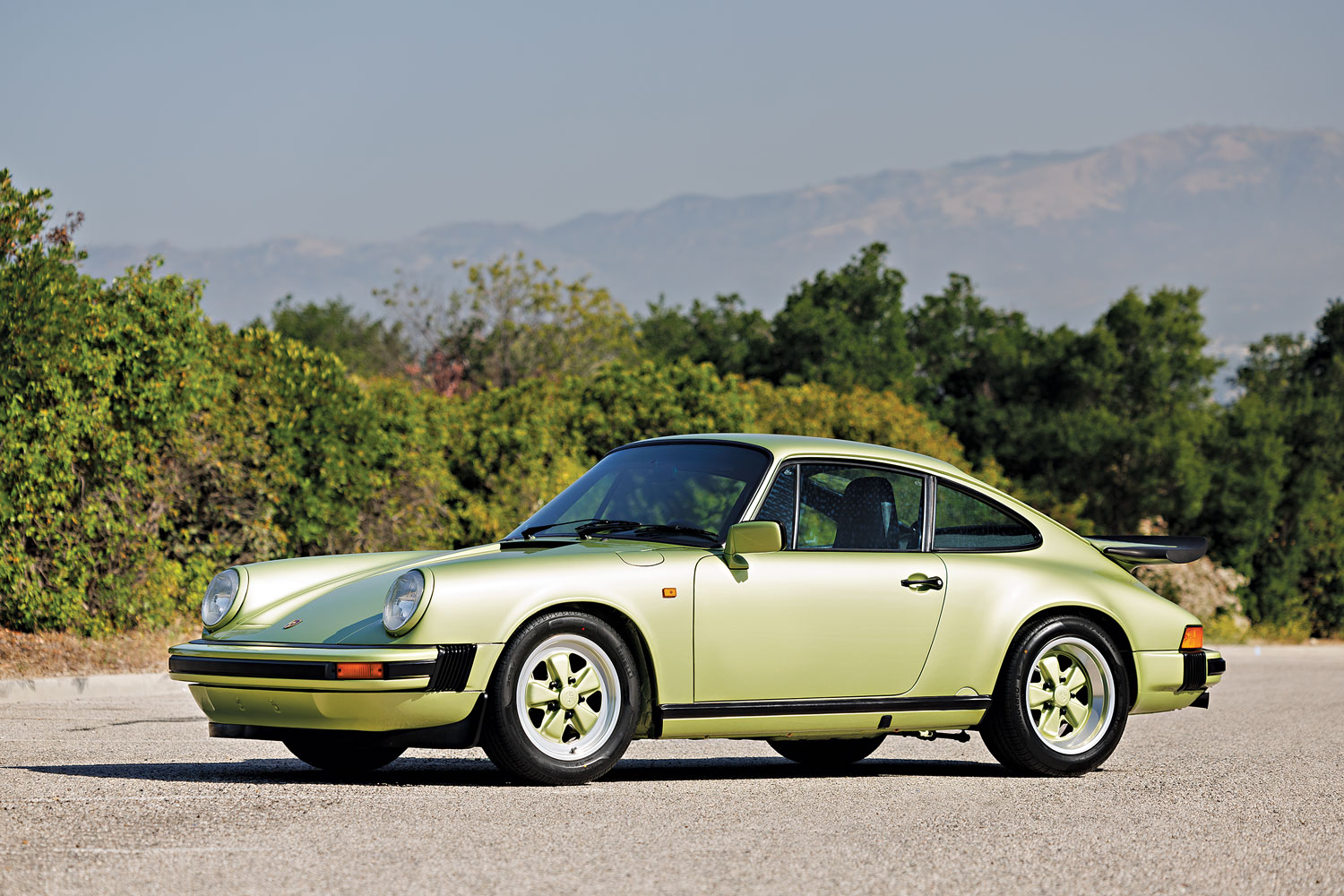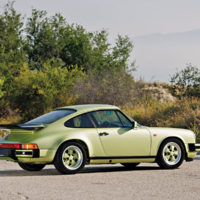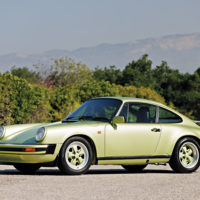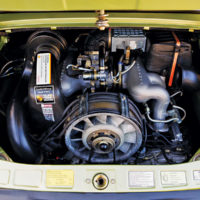SCM Analysis
Detailing
| Vehicle: | 1989 Porsche 911 Carrera Club Sport |
| Years Produced: | 1987–89 |
| Number Produced: | 340 (28 for the U.S.) |
| SCM Valuation: | $131,500 |
| Tune Up Cost: | $1,400 |
| Chassis Number Location: | Stamping on metal crossmember above gas tank; tag on windshield bottom on driver’s side; driver’s door jamb label |
| Engine Number Location: | Right-side upright fan support facing passenger’s side |
| Club Info: | Porsche Club of America |
| Website: | http://www.pca.org |
| Alternatives: | 1990–96 Nissan 300ZX, 1990–95 Ferrari 348, 1989–91 Lancia Delta HF Integrale 16V |
| Investment Grade: | C |
This car, Lot 22, sold for $467,000, including buyer’s premium, at Gooding & Company’s Pebble Beach, CA, auction on August 19, 2022.
Between August 1987 and September 1989, Porsche built 340 Carrera 3.2-liter Club Sports, option code M637. Only 28 were sold in the U.S. — not because Porsche wanted to deny us, but because no one here wanted the car. There’s a story behind that.
An early encounter
In January 1985, I visited the Porsche factory at the invitation of PCA President Jim Perrin. One night at dinner, Porsche CEO Peter Schutz said that he had been told that I was an “RS expert” — far from true, but who am I to argue? I did own a 1973 RS 2.7, so maybe?
Schutz offered me a drive the next day in their “F22” prototype “Carrera 3.2 RS,” which I enthusiastically accepted. The prototype car, some pounds lighter than the production Carrera, handled and accelerated well, but was not exceptional — even against my 12-year-older RS. Schutz had asked me for a memo on the specs for the car, concentrating on no-cost or low-cost deletions.
RE: 911 Club Sport
Returning home, with help from true experts, I wrote the memo. First, I recommended deletes and inexpensive substitutions: no rear seats, no radio/antenna/speakers, no sound deadening, no undercoating, no fog lights, no side or bumper decor, no rear nameplates, decal instead of hood emblem, lightweight manual seats, lightweight carpeting, lightweight door panels with cloth pull openers, no central locking, no power windows, no engine or trunk lights, no passenger’s sunvisor, no glovebox door, no clock, no cigarette lighter, no rear wiper or window heater, and, obviously, no options like A/C and sunroof.
Next, for additional cost, I wanted upgrades: aluminum hood/door skins/front fenders per the 1984 SC/RS, hollow fiberglass tray tail per the 1974 RS 3.0, fiberglass/kevlar bumpers, uprated suspension and brakes to SC/RS specs, and a “power kit” engine to get over 300 horsepower.
Most of the required bits were in the parts bins with known suppliers. The engine upgrade to 300 hp would be expensive and might not be possible for the U.S. with its emissions laws. Americans, however, probably could use the “once in a lifetime exemption” to import a “rest-of-world” car. I opined that enthusiasts would happily pay for the upgrades to get a modern-day RS. But that’s not what happened.
A mere decal special?
The resultant Carrera 3.2-liter special came at a time when Porsche was weakening financially. So it decided to hone the specs down to easily deleted items. The management committee nixed the RS appellation, saying that the car was not “RS-worthy.” Thus, the Club Sport moniker was revived from the 1981 924 GTS CS, and a corresponding large decal was added to the left front fender. This explains why only 28 were sold in the U.S.
In print and speeches, several of us in the Porsche community decried the lack of substantial weight savings and uprated mechanicals. With most of the no-cost/low-cost deletes from above but little more, the Club Sport weighed in only about 150 pounds less than standard Carrera 3.2. We thought trimming 300–400 pounds would have been achievable. Porsche had a long history of building lightweight cars, stretching back to the aluminum-bodied 550 Spyder and the decontented 356 Speedster. The company had been doing it for decades.
We described the car as a marketing-department decal special, which might have been the kiss of death. Porsche did throw in a few upgrades including the excellent SC/RS short shifter, larger sway bars, uprated shocks and a limited-slip differential. The engine had small internal changes, including hollow intake valves with a redline raised to 6,840 rpm (320 rpm higher than standard), but was rated at the same 231 hp (217 hp in the U.S.) as the typical 1984–89 Carrera 3.2-liter. Acceleration from 0 to 60 mph improved by a tenth of a second, maybe two, and top speed increased by 2 mph. Most Porschephiles yawned.
Special paint, special price
Our subject car was sold new in Germany, moved to Japan (where we first knew about it) and then back to Europe, to a friend in Belgium. Earlier this year, he sold it to a good friend in Detroit, who consigned it with Gooding & Company. It showed about 30,000 miles and had recently been expertly serviced.
The car’s real claim to fame was its paint-to-sample Linden Green color and its checkerboard cloth seats. Because the car had been fully repainted some years ago, it was not as original as many collectors prefer. Also, the original black wheel centers had been changed to matching green.
All that said, the car broke the bank at $467,000. Of six public sales since 2016, four have been between $154,000 and $197,000. The other two include a white car with 6,416 miles sold for $290,000 and one in paint-to-sample Irish Green with 9,200 miles sold at Gooding & Company’s 2016 Pebble Beach auction for $330,000 (SCM# 6804239).
Paint-color-centricity is well established in the Porsche market, especially on older models where paint-to-sample was much rarer than today. Blues and greens and some oranges will get you a 50%–100% premium from buyers, even savvy ones. That’s what happened here.
So now we know that a repainted PTS Linden Green Club Sport with 30,000 miles is worth $467,000. The market has spoken. ♦
(Introductory description courtesy of Gooding & Company.)




